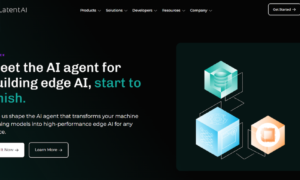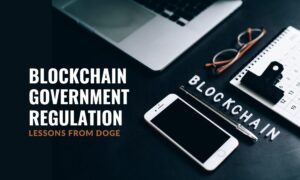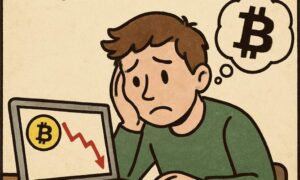Welcome to a world where your coffee pot talks to your alarm clock and your car can order groceries for you. The Internet of Things (IoT) has transformed the way we live our daily lives, blurring the lines between the physical and digital worlds. From smart homes that anticipate our every need to wearable devices that track our health in real time, the IoT is revolutionizing every aspect of our existence. In this blog post, we will explore seven fascinating examples of how the IoT is reshaping daily life and making it smarter than ever before.
Introduction to IoT
The term “Internet of Things” (IoT) was first coined by British technology pioneer Kevin Ashton in 1999. He defined it as “the network of physical objects that are embedded with electronics, software, sensors, and connectivity to enable them to collect and exchange data.”
In a more general sense, IoT refers to the growing trend of connecting any type of device with an internet connection so that it can send and receive data. This includes everything from smartphones and laptops to home appliances and vehicles.
According to a report from Business Insider Intelligence, the number of IoT devices will skyrocket from 14.2 billion in 2019 to 25.3 billion in 2030. That’s an increase of almost 80% in just 11 years!
How IoT is changing the way we live
The way we live is changing rapidly, thanks to the Internet of Things (IoT). IoT refers to the interconnectedness of physical objects and devices, aka things,” via the internet. This allows these objects and devices to collect and share data, which in turn can be used to improve our daily lives. Here are just a few examples of how the IoT is revolutionizing daily life:
1. Smarter Homes: With IoT-enabled devices, you can now control your home’s lighting, temperature, security system, and more from your smartphone or tablet. No more coming home to a dark house or worrying about whether you remembered to set the alarm!
2. Better Health and Fitness: There are now wearable fitness trackers that can not only track your steps and heart rate but also give you real-time feedback on your progress. This information can be used to help you make better choices about your diet and exercise routine.
3. Improved Customer Service: Businesses are using IoT technology to track inventory levels and customer preferences to improve the overall shopping experience. For example, some retailers are using sensors to detect when items are running low on shelves so that they can be quickly replenished.
4. Enhanced Safety and Security: The interconnectedness of devices through the IoT makes it possible to create a much safer world. For example, connected cars can communicate with each other and with infrastructure (like traffic lights) to avoid collisions.
The possibilities for IoT are nearly limitless, and the technology is only getting more powerful and sophisticated. With the help of IoT, we can create a better, safer, and more efficient future.
7 Examples of How IoT is Revolutionizing Daily Life
IoT devices are becoming increasingly commonplace in homes and offices around the world. Here are some examples of how IoT is revolutionizing daily life:
Smart Homes: IoT devices are being used to create smart homes that can be controlled remotely via a smartphone or tablet. For example, you can use an app to turn on or off lights, adjust the thermostat, or monitor security cameras.
Smart Offices: IoT is also being used to create smart offices that improve efficiency and productivity. For example, meeting rooms can be booked online, and conference calls can be set up automatically. Sensors can also be used to track employee productivity and identify areas where improvements can be made.
Smart Cities: The IoT is being used to create smart cities that are more efficient and sustainable. For example, traffic lights can be synchronized using data from sensors to reduce congestion and pollution. Waste management systems can also be optimized using IoT data to reduce landfill waste.
Smart Homes
Smart homes are one of the most fascinating examples of how the IoT is revolutionizing daily life. By installing sensors and actuators in homes, homeowners can remotely control their heating, cooling, lighting, and other home systems. They can also receive real-time alerts about energy use, water leaks, and security breaches. In addition, smart homes can provide families with greater peace of mind by helping them keep tabs on elderly relatives or children who are home alone.
Connected Cars
The Internet of Things is already revolutionizing daily life in countless ways, and one area where it is having a particularly profound effect is in the automotive sector. Connected cars are becoming increasingly commonplace as manufacturers seek to incorporate internet connectivity into their vehicles to offer enhanced features and services to drivers.
One of the most significant advantages of connected cars is that they can offer drivers real-time information about things like traffic conditions, weather, and even the location of available parking spots. This can help drivers avoid congestion and make better decisions about their journeys. In addition, connected cars can also provide a wealth of data to manufacturers about how their vehicles are being used, which can be used to improve future designs.
Another fascinating application of connected car technology is in the area of autonomous driving. Many major manufacturers are now working on developing self-driving cars, and the Internet of Things will play a vital role in making this possible. Connected cars will be able to communicate with each other and with infrastructure such as traffic lights, meaning that they will be able to navigate cities without the need for a human driver. This could have a huge impact on urban mobility, making journeys quicker and safer.
Wearables
IoT has already begun to revolutionize daily life, and one of the most fascinating examples is in the area of wearables. We are now able to purchase items like clothing and jewelry that track our fitness data, monitor our heart rate, and even provide us with real-time feedback on our environment. This technology is only going to become more prevalent as time goes on, and it will have a profound impact on the way we live our lives.
Smart Cities
Smart cities are becoming more common as technology advances. The term “smart city” generally refers to a city that uses sensors and other data-gathering devices to collect information about the city, its infrastructure, and its inhabitants. This information is then used to help city officials make better decisions about how to run the city.
For example, a smart city might use sensor data to help regulate traffic flow. By understanding where traffic is heaviest at different times of day, the city can adjust traffic signals and even create new routes to help ease congestion. Smart cities can also use data to improve public safety. For instance, by analyzing crime data, a city can deploy police officers to high-crime areas before crimes occur.
But smart cities aren’t just about using technology to solve problems; they also use technology to make life more convenient for residents. For example, many smart cities have implemented “smart parking” systems that use sensors to track open parking spots in real-time. This information is then relayed to drivers via a smartphone app, so they can quickly find an available spot.
There are many other ways that smart cities are using technology to improve daily life. These are just a few examples of how the IoT is revolutionizing daily life in cities around the world.
Healthcare and Telemedicine Systems
IoT devices are already having a profound impact on the healthcare industry by making it possible for patients to receive treatment without having to travel to a hospital or doctor’s office. This is especially beneficial for those who live in rural areas or who have difficulty getting to a medical facility. IoT-enabled devices can also be used to monitor patients’ vital signs and provide real-time data to doctors, which can help them make more informed treatment decisions.
In addition, the IoT is revolutionizing the way that medical professionals communicate with one another. Telemedicine, which is the use of telecommunications technology to deliver medical care, is becoming more common as doctors and other healthcare providers adopt IoT devices. This allows them to consult with colleagues in other parts of the world, share patient information quickly and easily, and provide better care overall.
Agriculture and Farming Automation
The IoT is providing a much-needed boost to the agriculture and farming industries. Farmers are now able to track their crops and soil health in real-time, which has led to a more efficient use of resources and increased yields. Automated systems are also being used to control irrigation, planting, and harvesting. This is resulting in less manual labor and a decrease in the overall cost of production.
Smart Retail and Shopping Experience
The Internet of Things is transforming the retail shopping experience, making it more convenient and personalized than ever before. IoT-enabled devices can track inventory levels and customer preferences, allowing retailers to stock the items that shoppers are most likely to want. They can also provide real-time information about sales and promotions, helping shoppers save money. In addition, IoT-connected devices can help retailers manage their store operations more efficiently, reducing costs and increasing profits.
Conclusion
The potential that IoT holds for us is only just beginning to be realized, and it promises to revolutionize our lives in ways we can’t yet fully imagine. From quantified self-movement, which tracks everything from sleep patterns to exercise performance, to the use of smart devices for home security and automation purposes, the possibilities are truly limitless. By harnessing the power of connected technology, we can make our day-to-day lives easier, more efficient, and better managed than ever before. It’s an exciting time indeed for anyone interested in learning about or exploring the world of IoT!



































